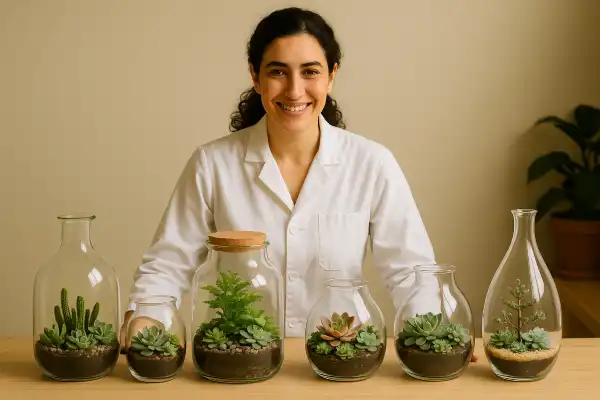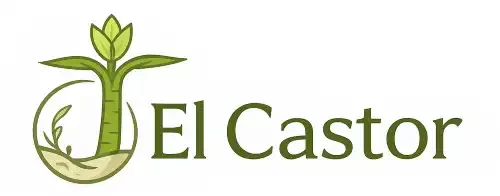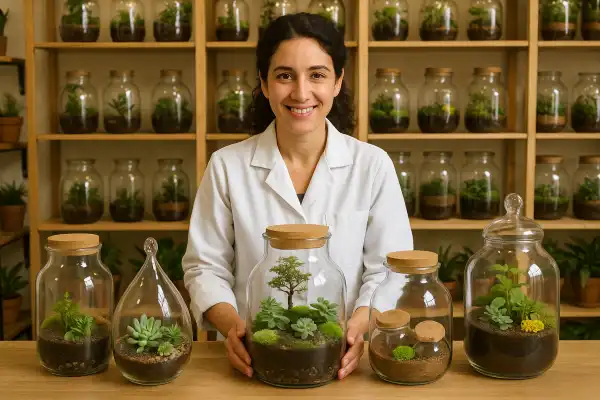What plants to put in a terrarium? This question surfaces repeatedly in my inbox, often accompanied by photos of beautiful glass vessels and ambitious dreams of creating miniature Eden-like worlds. The fascination makes perfect sense—there’s something deeply satisfying about crafting a self-contained ecosystem that thrives behind glass.
My journey with terrariums began during my botany studies in México, where I became captivated by how certain plants adapted to confined, humid environments. These mini-ecosystems mirror nature’s most resilient communities, where plants have evolved to thrive in specific microclimates with limited space and unique atmospheric conditions.
What plants to put in a terrarium?
The plants you choose for your terrarium depend entirely on whether you’re creating a closed or open system, as each environment supports completely different types of vegetation. Understanding this fundamental distinction will determine your terrarium’s success and longevity.

Understanding terrarium types and their plant requirements
Closed terrariums have a lid or stopper and create sealed environments with high humidity levels, perfect for moisture-loving plants, while open terrariums are permanently open to room conditions with much drier environments suitable for drought-tolerant species.
The physics behind these systems explains everything. Closed terrariums create their own contained water cycle where water moves from soil into plants through transpiration, then condenses on glass walls and returns to soil. This creates a tropical-like environment with humidity levels often exceeding 80%. Open terrariums, conversely, allow air circulation and moisture evaporation, creating conditions similar to arid or semi-arid environments.
Best plants for closed terrariums
Ferns are excellent choices for closed terrariums, with varieties like Boston Fern and White Rabbit’s Foot Fern bringing delicate, feathery textures to miniature ecosystems. These ancient plants evolved in forest understories where humidity stays consistently high and light remains filtered—conditions perfectly replicated in sealed glass environments.
Mosses like Carpet Moss (Hypnum) and Cushion Moss (Leucobryum glaucum) create lush green carpets for terrarium floors. Beyond their aesthetic appeal, mosses serve crucial ecological functions by helping regulate moisture levels and providing natural groundcover that prevents soil erosion during watering.
Nerve plants (Fittonia) enliven sealed terrariums with their dark leaves featuring brightly-colored veins, growing only to 6 inches tall with dense, compact foliage that thrives in low-light and moist conditions. These striking plants originated in South American rainforests, making them naturally adapted to high-humidity, low-light environments.
Polka dot plants (Hypoestes phyllostachya) add cheerful color with their variegated leaves featuring pink, white, or red blotches, thriving in humidity while staying compact enough for glass containers. The controlled microclimate of closed terrariums prevents these plants from becoming leggy, maintaining their attractive, bushy appearance.
Prayer plants reach maximum heights of 30cm and are ideal for larger terrariums, thriving in humidity while requiring bright, indirect light to open their leaves during the day. Their fascinating nyctinastic movement—leaves folding at night and opening during day—adds dynamic interest to terrarium displays.
Additional excellent options include small orchids, baby tears, and artillery ferns. Artillery ferns (Pilea microphylla) create delicate, interesting textures and thrive with minimal care in closed terrariums due to their love of moisture and humidity.
Best plants for open terrariums
Cacti and succulents are best for open terrariums, with plants like Aloe, Hens & Chicks, and various cacti species preferring circulating air and arid environments. These remarkable plants store water in specialized tissues, allowing them to thrive in low-humidity conditions where tropical plants would quickly desiccate.
Try Echeveria, Haworthia, Crassula, Sempervivum, Jade Plant, and Blue Star Sapphire plants, choosing succulents that grow at similar rates and require similar amounts of light and water. Size considerations prove crucial—select compact varieties that won’t quickly outgrow their glass homes.
Air plants (Tillandsia) make excellent low-maintenance plants for open terrariums, as these epiphytes don’t need soil and absorb water and nutrients through their leaves. These fascinating plants can be mounted on stones, driftwood, or displayed alone, requiring only weekly removal for misting or soaking.
Save for some lower-light tolerant species like Haworthia and Gasteria, most succulents prefer bright, if not direct, light, making open terrariums perfect for sunny windowsill locations.
Critical selection criteria
Beyond humidity preferences, successful terrarium plants share several key characteristics. Terrarium plants should be low maintenance, slow growing, and compact, so they don’t require much attention after planting and won’t outgrow their space.
Size management becomes essential in confined spaces. Choose plants small enough to fit into your terrarium container without touching the sides of the glass, preferably bringing your container to the nursery or bringing measurements to ensure proper fit.
Growth rate considerations prevent future headaches. Fast-growing plants quickly overwhelm limited space, requiring frequent pruning or complete replanting. Slow-growing species maintain proportional relationships within their glass ecosystems for years.
Light requirements must align with your intended display location. Plants grown in terrariums generally receive indirect and filtered light, as direct sunlight through glass can create excessively high temperatures inside the terrarium.
Plants to avoid
Certain plants prove problematic in terrarium environments regardless of good intentions. Succulents generally thrive in high light and low humidity environments, making closed terrariums too humid for their success. The inverse holds true—tropical plants rarely survive in open, arid conditions.
Fast-growing species like pothos, while beautiful, require constant maintenance in confined spaces. Large-mature-size plants eventually outgrow even generous containers. Plants requiring frequent fertilization prove incompatible with terrarium goals of minimal intervention.
Combining plants successfully
When planning your terrarium, choose plants with the same growing requirements, including humidity, watering, soil, and light. This principle applies whether you’re creating simple single-species displays or complex multi-plant communities.
Consider visual composition alongside botanical compatibility. Varying textures, heights, and growth patterns create more interesting displays. Try to vary the shape and texture of the plants you choose to help create interesting arrangements, being sure not to overfill the terrarium so plants have room to grow.
Foreground, midground, and background placement creates depth in larger terrariums. Low-growing mosses and small succulents work well in foreground positions, while taller ferns or air plants provide vertical interest in background areas.
Conclusion
Understanding plant selection represents the foundation of successful terrarium creation. The choice between closed humidity-lovers and open drought-tolerants determines every subsequent decision about soil, watering, and placement.
Last September, I helped my neighbor María choose plants for her first terrarium—a vintage apothecary jar destined for her kitchen window. We selected a tiny Boston fern, cushion moss, and a delicate nerve plant with silver veins. Six weeks later, that miniature world thrives behind glass, its morning condensation cycles creating natural artistry that changes with each sunrise. Her success story began with understanding one simple truth: the right plants make all the difference in creating these captivating microcosms that bring nature’s wonder into our daily lives.

